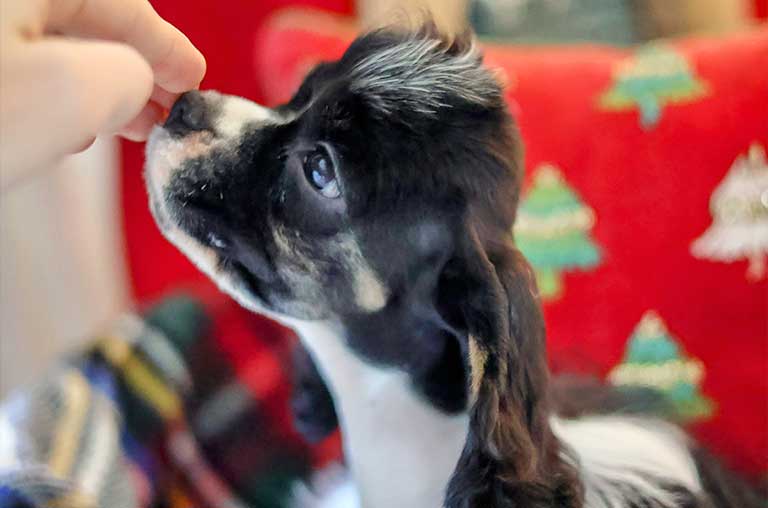Many cocker spaniel owners are worried about their dogs’ health. Apart from health issues, they are perfect companions to humans and other pets. In the active group of dogs, cocker spaniels are the smallest breed. They have a compact and sturdy body, ideal for activities.
One of the main reasons these dogs are loved most is their loyal, gentle, and loving nature. They get along with everyone easily, whether it is children or elders. They live longer than many breeds, and generally, they are healthy. However, the owners of cocker spaniels should be aware of some of the common cocker spaniel health issues. So, here is a brief about these health issues.
Cocker Spaniel Health Problems
Cocker Spaniels have few common health problems. This blog covers common Cocker Spaniel health problems and offers tips on prevention and care.
Elbow Dysplasia
Elbow dysplasia occurs when the bones in a cocker spaniel’s elbow do not align or meet the joint correctly. This leads to improper joint function. Elbow Dysplasia condition can cause more discomfort and pain, particularly when the dog moves its forelimb, often causing noticeable limping or restricted movement. Over time, this misalignment can worsen the symptoms and further impact the dog’s mobility.
There are several variations of Elbow Dysplasia including fragmented medial coronoid condition, elbow incongruity, and ununited anconeal condition. Elbow Dysplasia is one of the several joint and leg conditions that impact the dog and most of the time it leads to mobility problems.
Elbow Dysplasia develops during the growing stage of the puppy and it is mostly a consequence of genetics. This health risk leads to elbow arthritis and will be managed with the support of an elbow brace. It will help them to overcome the problem of instability.
Cocker Spaniels IVDD
This is one of the cocker spaniel health problems that can cause leg paralysis. IVDD or Intervertebral Disc Disease is a problem in the spine and causes leg paralysis temporarily or sometimes permanently. Cocker spaniels have more risk of getting IVDD and it happens when the spinal ruptures.
IVDD condition happens to the dogs suddenly without any signs or warnings. When a disc ruptures, the inner material of the disc pushes opposite of the spinal cord, which can affect the dog’s mobility. This pressure on the spinal cord can lead to difficulties in movement, discomfort, and reduced coordination, making it harder for the dog to move freely.
Once this happens, cocker spaniels will be unable or unwilling to do movement of both back legs. The common signs are sudden paralysis, hunched back, and dragging their back legs.
The paralysis can be permanent or temporary. The earlier you treat your dog, the chances of getting better are more. After the treatment and crate rest, a dog wheelchair can be used to recover and rehabilitate.
Patellar Luxation
Patellar Luxation is a condition where a Cocker Spaniel’s kneecap slips. One can identify this situation when a cocker spaniel extends its leg behind while running, then kicks out forcefully until their kneecap moves back to its correct position. This natural movement helps realign the joint during activity.
In most cocker spaniels, this condition is mild and does not cause a big threat. However, you need to take your dog to the vet, suppose this condition occurs regularly or dislocation appears in back legs. Because the more frequently your cocker spaniel’s kneecap pops out, the more risk of getting arthritis once they become old.

Ear Infections
Ear infections are one of the most common health issues of Cocker Spaniels. The shape of the cocker spaniel’s ears is long and floppy. Due to this inside the ears, it creates more moisture. The floppy ears decrease the airflow. Additionally, the long hair also causes moisture, and moist ears become the breeding ground for bacteria. With the increasing number of bacteria, they start to cause ear infections.
It is important to remain attentive and diligent to keep Cocker Spaniel’s ears clean and healthy. In particular, this breed is prone to various ear-related issues, such as canker sores, yeast infections, and infestations of ear mites if their ears are not kept dry and free from dirt. Without proper care, these problems can easily arise, but they are entirely preventable through regular cleaning and maintenance. Additionally, the presence of hair in the ear canals often necessitates frequent grooming to prevent buildup and blockages. Routine check-ups with a veterinarian are also recommended to ensure overall ear health and address any concerns before they worsen.
Along with ear infections, they also tend to get skin allergies. Skin allergies also trigger ear infections. If you don’t heed any of these infections, it can cause severe pain and become a big problem. Hence, regular visits to the vet, plucking the ear, and cleaning the ears are the best ways to avoid such infections.
Lip Fold Dermatitis
Lip Fold Dermatitis in Cocker Spaniels is one of the common health issues. This disease is also called cocker mouth condition and it is common in cocker spaniel breeds. Bad breath can occur in dogs of all breeds. However, if your cocker spaniel’s breath has an especially strong odor, it could be a sign of something caught in their teeth or an indication of dental problems.
Oral hygiene and regular inspection of your cocker spaniel is the only way to avoid this infection. If you notice continuous bad breath but are unable to find any obstruction, you need to check the fur near the dog’s mouth.
This is not a big threat to your dog, however, this can cause a lot of pain to your furry friend. So, it is important to keep oral hygiene and clean the teeth regularly.
Cocker Spaniels Eye Diseases
Cocker spaniels are at risk of getting two types of eye conditions. The owners of cocker spaniels should be aware of these two eye conditions and identify them at the early stage. The majority of the cocker spaniels eye issues come from genetics. They include dry eye, eye pressure due to glaucoma, conjunctivitis, and other serious eye risks such as progressive retinal atrophy.
Before adopting a cocker spaniel puppy, it’s essential to discuss any eye conditions present in its parents with the breeder. Knowing the eye health history of their parents helps you understand any potential issues that may arise, allowing you to take proactive steps in caring for your puppy’s eyes. Regular cleaning of cocker spaniel eyes is also crucial, as this breed is prone to tear staining and eye discharge, which, if left unaddressed, can lead to discomfort or infections.
Glaucoma
Cocker spaniels are one of those dogs that have the risk of getting glaucoma. This is one of the common cocker spaniel health issues that dog owners should be aware of. Glaucoma creates a huge amount of pressure on the eyes of cocker spaniels that can pave the way for permanent blindness.
So, you need to take your cocker spaniels regularly to the vet and get their eyes checked. The signs of vision issues are discolored discharge, irritated eyes, excessive tears, or red eyes. If you see any of these signs, it is best to show them to a veterinary doctor.
Cherry Eye
Under cherry eye condition, the lower eyelid turns inside out. This condition is generally called “third eyelid”. This eye condition occurs when the cataracts and eyelids prolapse. One can find these conditions in many breeds of dogs, especially for dogs that are under 2 years old. This condition is treatable and with surgery, the dog’s eye can be cured.

Progressive Retinal Atrophy
If your pet gets this health condition, it is one of the dangerous signs. This disease causes complete blindness eventually in cocker spaniels. This health condition is part of degenerative health issues. This problem attacks photoreceptor cells in the eyes and deteriorates over time. The bad news is as of now there is no solution for this disease. But with the support of the dog owner, they still can live a normal life.
Skin Problems
Some major Cocker Spaniel skin problems can become persistent and need ongoing care. Common signs include frequent scratching, flaky or bumpy skin, unpleasant odors, and hair loss. Causes include mange, allergies, and bacterial or fungal infections.
Anemia
Issues with the red blood cells are not new to cocker spaniels. This results in bleeding disorder and anemia. The signs of anemia and bleeding disorders are limping, blood in stool or urine, lethargy, and easy bruising.
Skin Tumors
Cocker spaniels can also get skin tumors. The most problematic skin tumor is MCT or mast cell tumor. To identify this, you need to rub your hands over the coat of the cocker spaniel and check for any lump.
Conclusion
These are the major cocker spaniel health issues each cocker spaniel’s owners should be aware of. After knowing these issues, you must take all necessary actions to avoid these health issues affecting your pet. So, if you take care of your pup well, they will last longer than other breeds. These dogs will ensure lifelong loyalty, eagerness to please the owner, and activeness. Hence, take care of your furry friend and enjoy the beautiful companionship for many years!

Leave A Comment